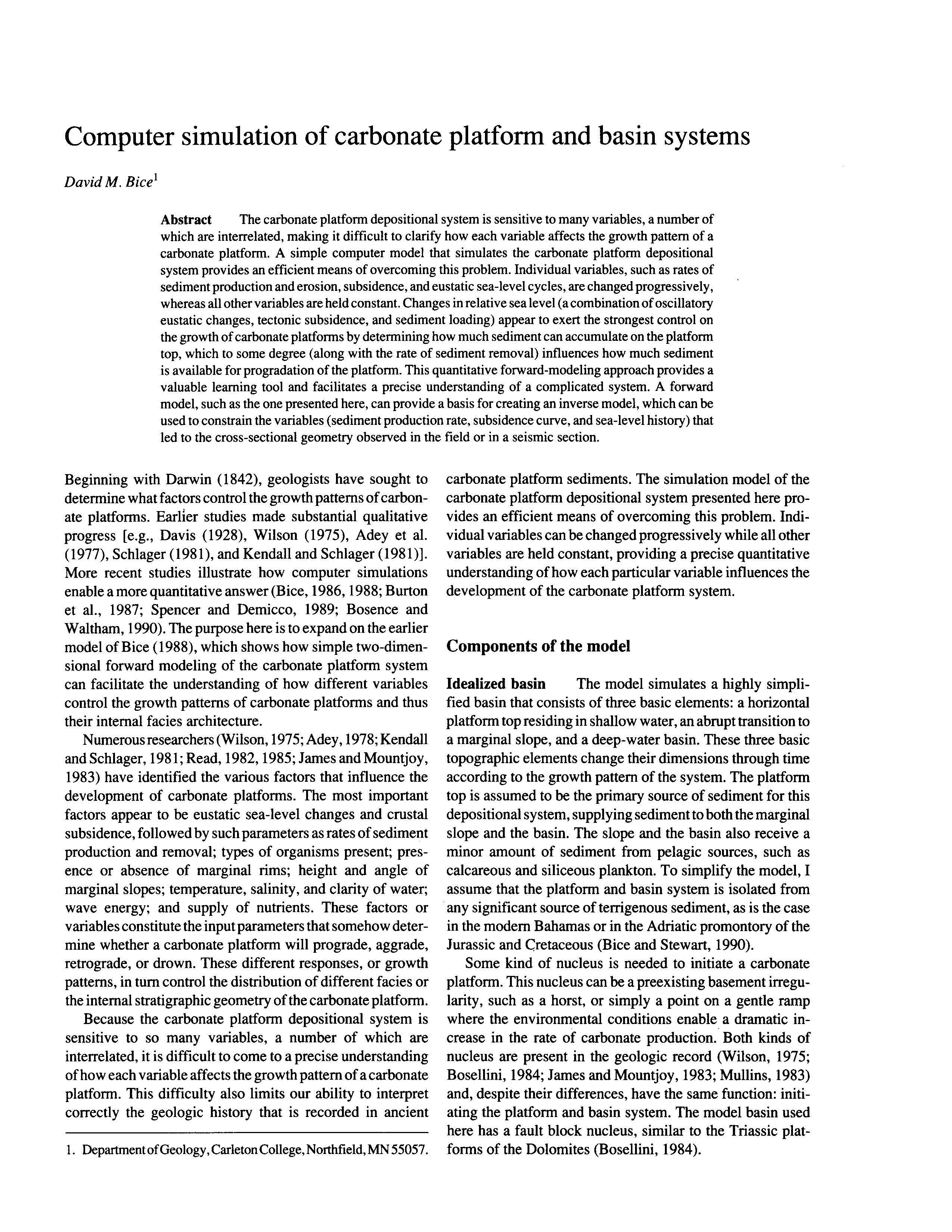Computer simulation of carbonate platform and basin systems
DOI:
https://doi.org/10.17161/kgsbulletin.no.233.20470Abstract
The carbonate platform depositional system is sensitive to many variables, a number of which are interrelated, making it difficult to clarify how each variable affects the growth pattern of a carbonate platform. A simple computer model that simulates the carbonate platform depositional system provides an efficient means of overcoming this problem. Individual variables, such as rates of sediment production and erosion, subsidence, and eustatic sea-level cycles, are changed progressively, whereas all other variables are held constant. Changes in relative sea level (a combination of oscillatory eustatic changes, tectonic subsidence, and sediment loading) appear to exert the strongest control on the growth of carbonate platforms by determining how much sediment can accumulate on the platform top, which to some degree (along with the rate of sediment removal) influences how much sediment is available for progradation of the platform. This quantitative forward-modeling approach provides a valuable learning tool and facilitates a precise understanding of a complicated system. A forward model, such as the one presented here, can provide a basis for creating an inverse model, which can be used to constrain the variables (sediment production rate, subsidence curve, and sea-level history) that led to the cross-sectional geometry observed in the field or in a seismic section.
Downloads

